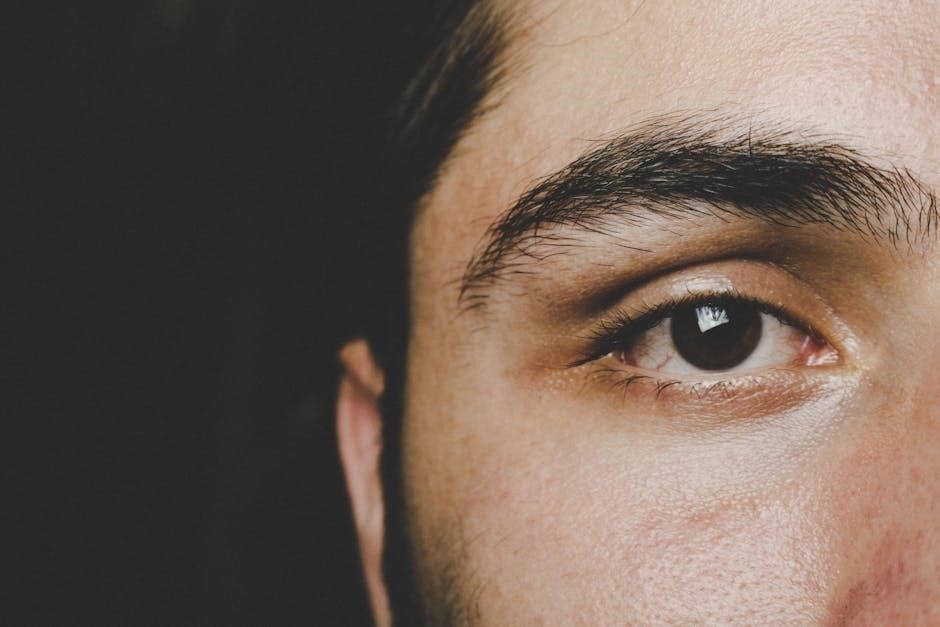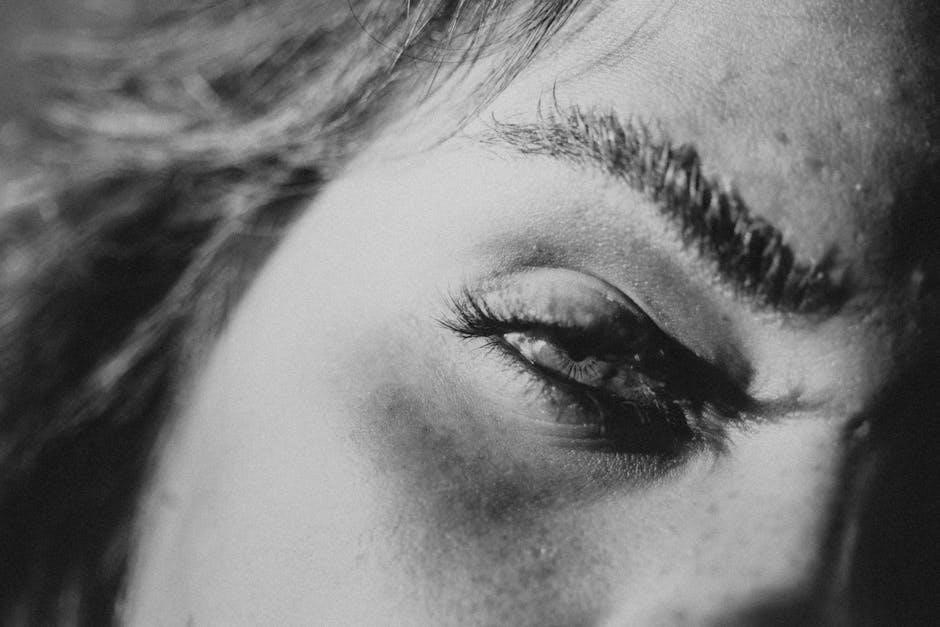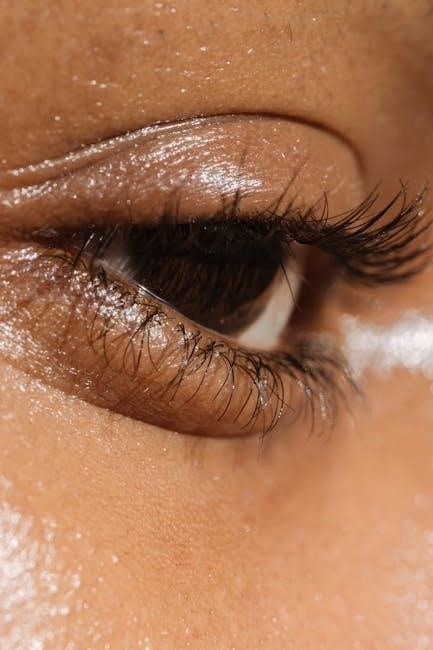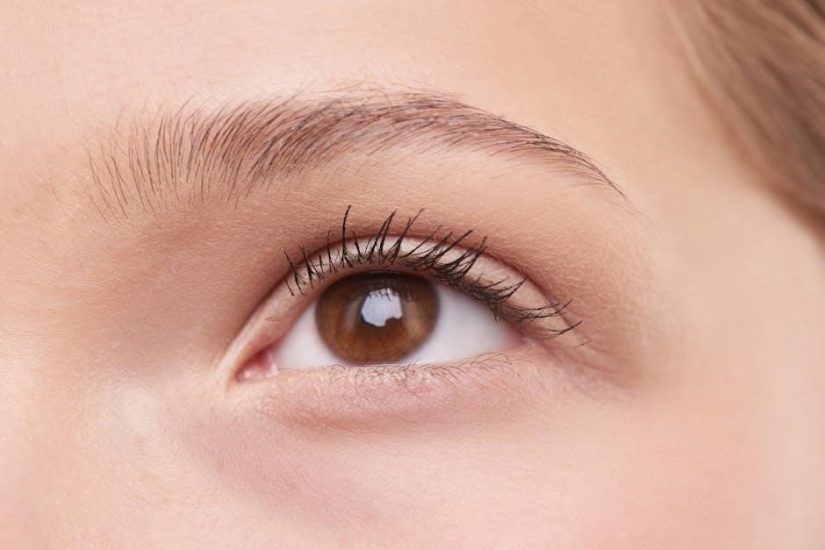Understanding Your Tools
Mastering eyebrow shaping begins with the right tools. Essential items include a spoolie for grooming‚ tweezers for precision plucking‚ and a brow pencil for outlining and filling. A sharpener ensures your pencil stays precise‚ while an angled brush helps create defined strokes. Investing in quality tools elevates your brow game and makes the process smoother and more effective.
1.1 Essential Products for Eyebrow Shaping
The must-have tools for eyebrow shaping include a high-quality brow pencil‚ a spoolie for blending and grooming‚ and a pair of slanted tweezers for precise hair removal. An angled brush helps create sharp lines‚ while a brow razor or scissors can trim stray hairs. A Brow Sharpener keeps pencils sharp‚ ensuring clean‚ defined strokes. These tools collectively help achieve polished‚ professional-looking brows at home.
1.2 Choosing the Right Eyebrow Pencil
Selecting the right eyebrow pencil is crucial for achieving natural-looking brows. Opt for a pencil that matches your natural brow color to blend seamlessly. A fine tip allows precise strokes‚ while a built-in spoolie or brush aids in blending. Consider a pencil with a sharpener for consistent sharpness. Avoid overly soft pencils to prevent smudging. The right pencil ensures defined‚ professional results for shaping and filling your brows effectively.
1.3 The Role of a Spoolie in Brow Grooming
A spoolie is a must-have tool for brow grooming‚ serving multiple purposes. It helps detangle and align brow hairs‚ ensuring a smooth base for makeup. Use it to blend brow products evenly‚ softening harsh lines for a natural look. The spoolie also aids in shaping by setting hairs in place and maintaining definition. Regular use keeps brows tidy and polished‚ enhancing their overall appearance effortlessly.

The Influence of Face Shape
Your face shape plays a crucial role in determining the most flattering brow style. Understanding how different shapes interact with brow designs helps enhance your natural features and balance your look effectively.
2.1 Identifying Your Face Shape
Identifying your face shape is key to selecting the ideal brow style. Common shapes include round‚ oval‚ square‚ heart‚ long‚ and diamond. Measure proportions: round faces are widest at the cheeks‚ while square faces have equal width and height. Oval faces are longer than wide‚ heart-shaped faces have a narrow chin‚ and long faces are twice as long as they are wide. Diamond faces feature a narrow forehead and jawline.
2.2 Matching Brow Shapes to Your Face Shape
Round faces benefit from angular or arched brows to elongate features‚ while oval faces suit soft‚ natural shapes. Square faces balance with softer‚ curved brows‚ and heart-shaped faces look best with brows that mirror their natural width. Long faces pair well with flat or slightly arched brows‚ and diamond faces complement sharp‚ defined arches to balance narrow features.
2.3 Adjusting Brow Angles for Different Face Shapes
Round faces benefit from angular or arched brows to elongate features‚ while oval faces suit soft‚ natural shapes. Square faces balance with softer‚ curved brows‚ and heart-shaped faces look best with brows that mirror their natural width. Diamond faces complement sharp‚ defined arches to balance narrow features.
DIY Brow Mapping
DIY brow mapping uses a pencil to mark the brow’s front‚ arch‚ and tail‚ creating a customizable guide for shaping and grooming based on your face shape.
3.1 The 3-Point Technique for Brow Mapping
The 3-point technique involves marking three key points: the front‚ arch‚ and tail of your brow. To find the front‚ align the pencil vertically with the outer nostril. The arch lies above the outer edge of your iris‚ and the tail ends diagonally from the outer corner of your eye. This method ensures a balanced‚ symmetrical brow shape that complements your face structure‚ making it easier to outline and groom your brows accurately.
3.2 Determining the Starting Point‚ Arch‚ and Tail
To determine your brow’s starting point‚ align a pencil vertically with the outer edge of your nostril. The arch should sit above the outer edge of your iris‚ while the tail aligns with the outer corner of your eye. Use natural light to ensure accuracy and symmetry. Adjustments may be needed based on your face shape to achieve the most flattering brow structure.
3.3 Marking Key Points with a Brow Pencil
Use a brow pencil to mark the starting point‚ arch‚ and tail of your brows. Lightly dot the pencil at the starting point‚ aligning it with your nostril. Mark the arch above the outer edge of your iris and the tail at the outer corner of your eye. These marks guide your shaping‚ ensuring symmetry and precision. Gently blend with a spoolie for a natural finish.
Step-by-Step Brow Shaping
Start by outlining your brows with makeup to define the shape. Tweeze stray hairs strategically for a clean look. Fill in sparse areas with a brow pencil‚ blending gently for a natural finish. Use light strokes to mimic hair growth‚ ensuring symmetry and precision throughout the process.
4.1 Preparing Your Brows
Begin by ensuring your brows are clean and dry. Brush them with a spoolie to align hairs and identify uneven areas. Trim any overly long hairs using brow scissors or a trimmer for a neat base. Use natural light to spot stray hairs accurately. Optionally‚ apply a numbing cream to minimize discomfort during tweezing or waxing. This step ensures precision and comfort for the shaping process.
4.2 Outlining Your Brows with Makeup
Start by using a brow pencil to outline your desired shape‚ following the mapped points. Lightly sketch the top and bottom edges‚ ensuring symmetry. Fill in sparse areas with soft strokes‚ mimicking natural hair texture. Use a spoolie to blend the product for a seamless look. Avoid heavy lines; instead‚ build coverage gradually for a natural‚ polished appearance that enhances your brow structure.
4.3 Tweezing Strategically
Pluck hairs that fall outside your outlined shape‚ working in natural light to ensure accuracy. Tweeze in the direction of hair growth to avoid ingrown hairs. Focus on stray hairs below the brow line‚ as over-plucking the top can lead to a thin appearance. Tweeze sparingly‚ checking your progress often‚ to maintain a balanced‚ natural look. A little goes a long way—over-tweezing can be difficult to fix. Use a spoolie to groom and blend post-tweezing.

Filling in Sparse Areas
Filling sparse areas with a brow pencil enhances definition and creates a fuller look. Blend gently for a natural finish that frames your face perfectly.
5.1 Selecting the Right Brow Color
Choosing the right brow color is crucial for a natural look. Match your brow pencil to your natural hair color or one shade lighter for a subtle effect. Consider your skin tone—cool tones suit ash or taupe shades‚ while warm tones pair well with brown or caramel hues. Test the pencil on your wrist to ensure the color complements your complexion. The right shade enhances your brow’s natural shape and definition seamlessly.
5.2 Techniques for Filling Sparse Areas
Filling sparse areas requires precision and light strokes. Use short‚ gentle motions with your brow pencil to mimic hair strands‚ feathering outward for a natural look. Focus on sparse spots‚ building coverage gradually. Avoid heavy lines by layering lightly and blending with a spoolie. This technique ensures a soft‚ realistic finish that enhances your brows without appearing artificial or overdone.
Blending is key to achieving a seamless brow look. Use a spoolie to gently feather the product‚ softening harsh lines and creating depth. Lightly sweep the spoolie from the arch to the tail‚ ensuring the color transitions naturally. This technique prevents the brows from appearing too bold or artificial‚ resulting in a polished yet effortless appearance that complements your natural features.
Brow Maintenance
5.3 Blending for a Natural Look
Blending is key to achieving a seamless brow look. Use a spoolie to gently feather the product‚ softening harsh lines and creating depth. Lightly sweep the spoolie from the arch to the tail‚ ensuring the color transitions naturally. This technique prevents the brows from appearing too bold or artificial‚ resulting in a polished yet effortless appearance that complements your natural features.
6.1 Trimming vs. Cutting
Trimming and cutting are essential for maintaining brow shape. Trimming removes excess hair tips‚ preserving natural texture‚ while cutting shortens hair length for a cleaner look. Use scissors or brow trimmers for trimming‚ and small clippers for cutting. Both methods require precision to avoid unevenness. Regular trimming keeps brows neat‚ while cutting allows for more control over length‚ enhancing overall brow definition and symmetry.
6.2 Scheduling Regular Grooming Sessions
Consistency is key to maintaining perfectly groomed brows. Schedule regular sessions every 4-6 weeks to keep your shape defined and hair growth under control. For low-maintenance upkeep‚ consider professional appointments or DIY touch-ups at home. Regular grooming prevents overgrowth and ensures your brows remain balanced‚ enhancing your overall facial harmony and personal style.
6.3 Using Natural Light for Accuracy
Natural light is essential for precise brow grooming. It reveals every detail‚ ensuring accurate shaping and avoiding over-plucking. Position yourself near a window to maximize visibility. This setup helps you spot stray hairs and maintain symmetry‚ making it easier to achieve professional-looking results at home without the need for specialized lighting or equipment.

Professional Brow Services
Professional brow services offer customized shaping‚ expert techniques‚ and long-lasting results. Regular salon visits ensure maintained beauty and personalized care‚ enhancing your natural features effectively.
7.1 Benefits of Professional Shaping
Professional brow shaping offers expert techniques tailored to your face shape and features. Technicians use precision tools for clean‚ defined results‚ saving time and effort. Regular sessions ensure consistency and long-lasting beauty. Professional shaping enhances natural brow structure‚ boosts confidence‚ and aligns with current trends. It’s a worthwhile investment for a polished‚ personalized look that complements your overall aesthetic.
7.2 How Often to Visit a Salon
Visiting a salon for brow shaping typically ranges from every 4 to 6 weeks‚ depending on brow growth rate and desired shape. Faster growth may require more frequent visits‚ while slower growth allows for longer intervals. Waxing tends to last longer than tweezing. Budget and schedule should be considered‚ with personalized advice from a stylist offering tailored recommendations. Adjusting based on personal needs and aftercare can help maintain the shape.
7.3 Tips for Communicating with Your Technician
Clear communication is key to achieving your desired brow shape. Bring reference photos to show your preferences. Inform your technician about any past brow experiences or sensitivities. Ask questions about the process and expected results. Provide feedback during the session to ensure satisfaction. A good technician will guide you but also value your input to create a look that enhances your features naturally.

Brow Trends
Current brow trends emphasize natural‚ laminated‚ and sculpted looks. Soft‚ feathery brows remain popular‚ while defined arches and boxy shapes are also in vogue‚ catering to various face shapes.
8.1 Current Popular Brow Styles
Popular brow styles include laminated brows for a sleek‚ shiny look‚ soft feathery brows for a natural vibe‚ and defined arches for a dramatic effect. Boxy brows‚ characterized by straight edges‚ are also trending‚ offering a modern twist. These styles cater to diverse preferences‚ from minimal effort to high-impact looks‚ allowing individuals to choose what complements their face shape and personal style best.
8.2 How Trends Vary by Face Shape
Brow trends adapt to face shapes for flattering results. Round faces benefit from angular‚ defined brows‚ while oval faces can pull off soft‚ natural looks. Square faces look best with brows featuring softer angles‚ and heart-shaped faces suit shorter‚ curved brows. Understanding your face shape helps in selecting a trend that enhances your features and balances your overall appearance naturally.
8.3 Adapting Trends to Your Features
Adapting brow trends to your features ensures a personalized look. Consider natural light for accuracy and use tools like a brow pencil or spoolie to refine your shape. Soft‚ natural brows suit delicate features‚ while bold styles enhance strong facial structures. Techniques like mapping and blending help customize trends to your unique face‚ ensuring a flattering and cohesive appearance that complements your natural beauty.
